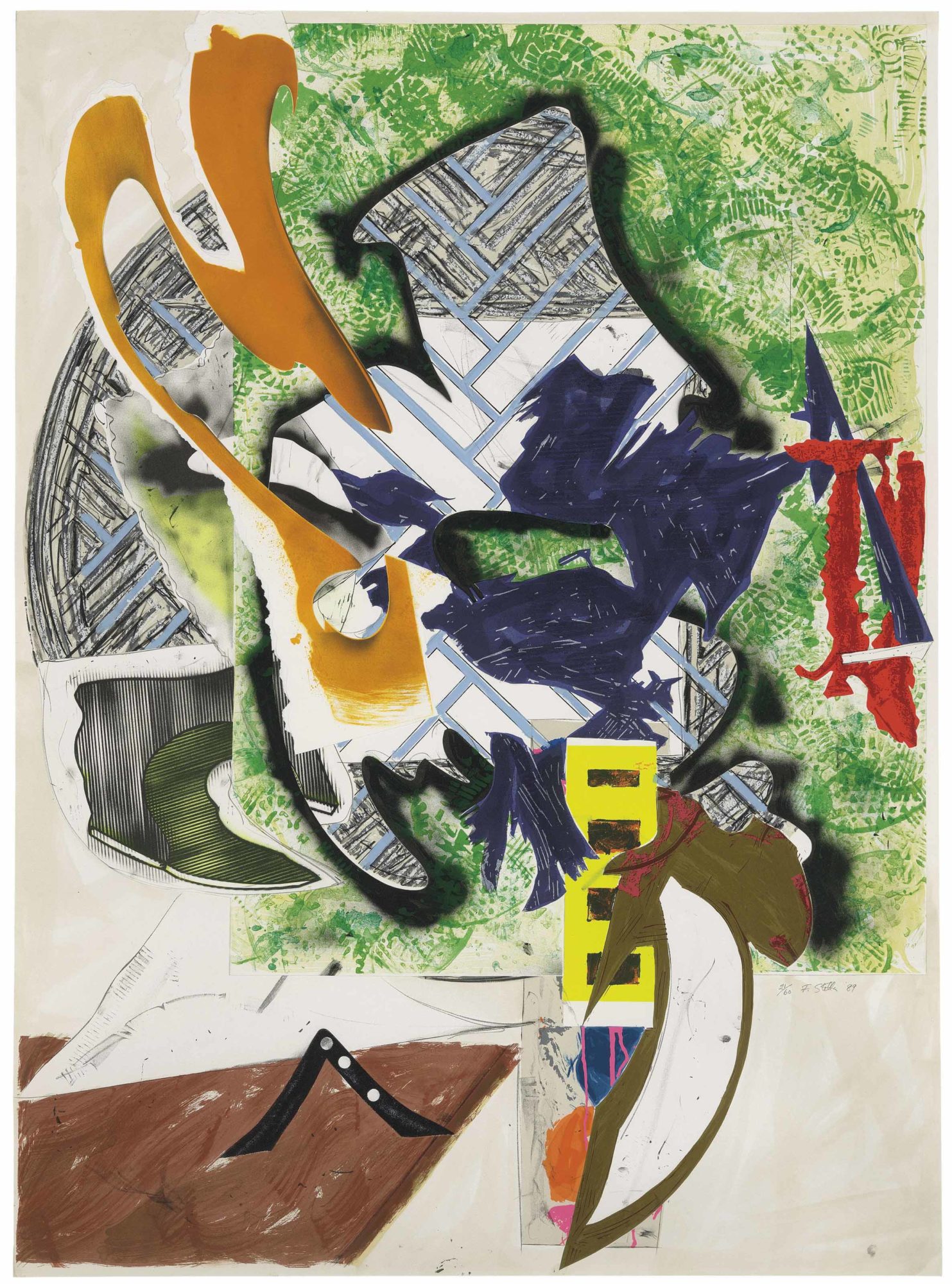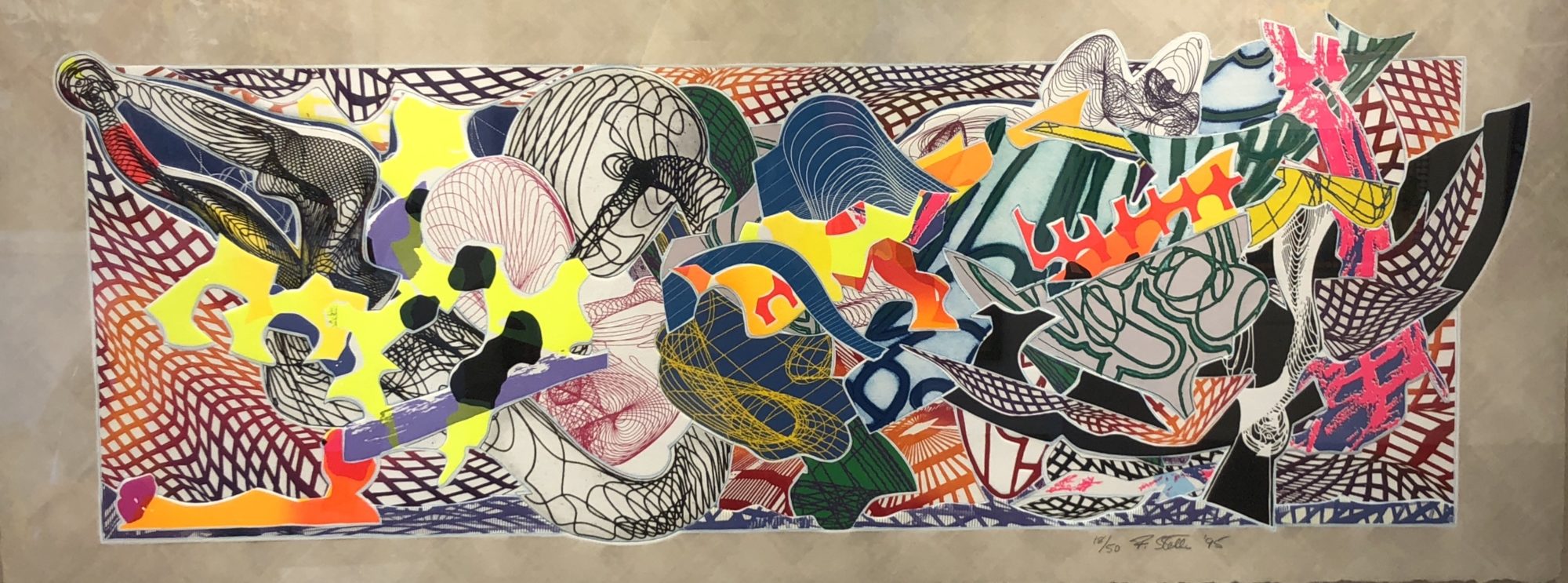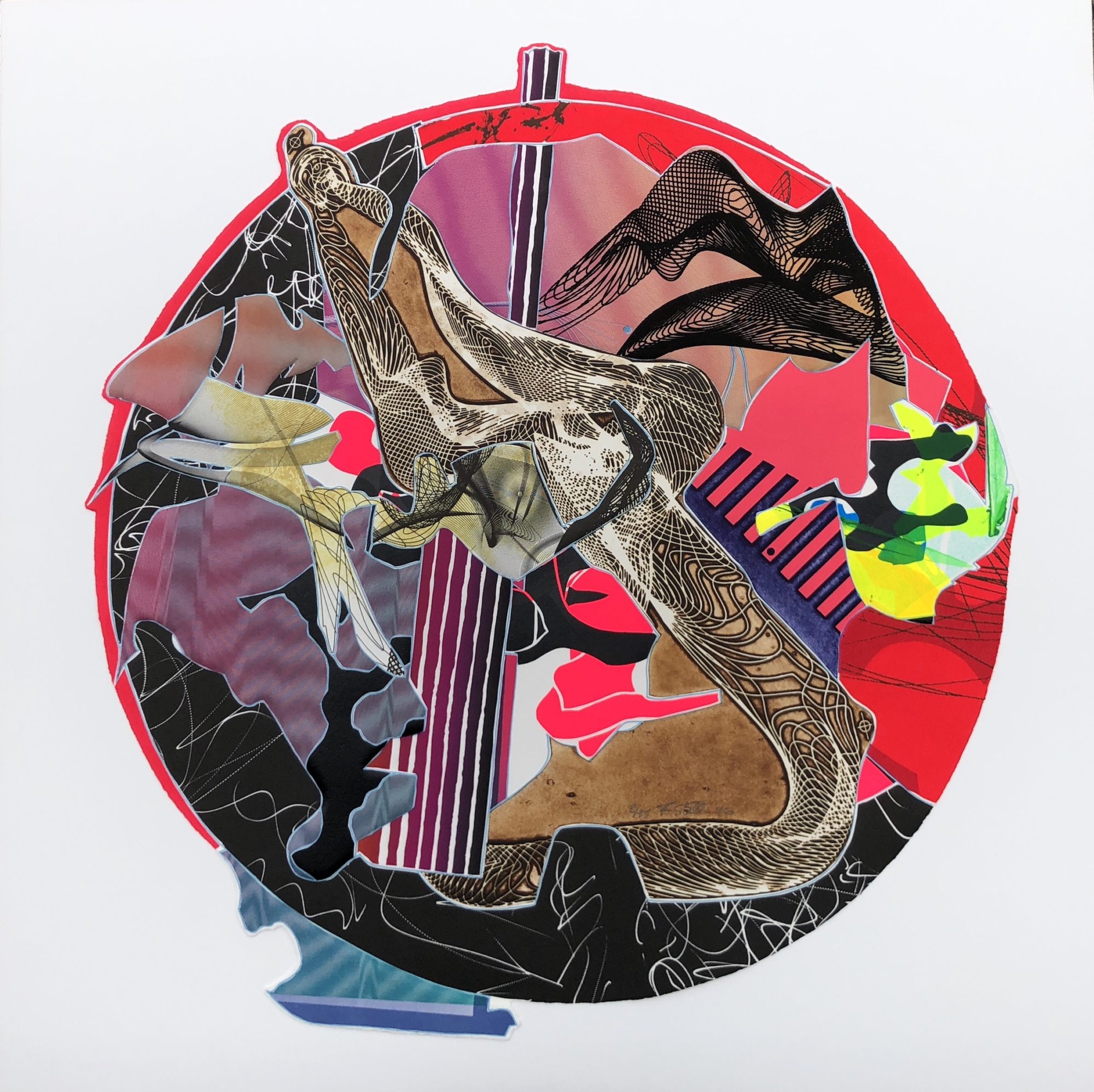Frank Stella – Ahab’s Leg
Frank Stella, Ahab’s Leg is from ‘The Waves from The Moby Dick Prints 1989-93 series’. This artwork is a Silkscreen with lithography, and linoleum block with hand-coloring, marbling, and collage on T.H. Saunders and Somerset papers, the full sheet. Signed, dated, and numbered from the edition of 60 in the lower right. There were also 10 artist proofs. Published by Waddington Graphics, London. Axsom 198.
Over a period of twelve years, from 1985-1997, Frank Stella produced a major series of works in various media that are linked to Herman Melville’s ‘Moby Dick’ (1851). It is the artist’s most extensive project and an epic achievement in the history of twentieth-century art. Stella made one or more works for each of the novel’s 135 chapters, two non-narrative sections, and epilogue. The completed series consists of 266 works: over a hundred painted and unpainted metal refliefs, nine freestanding sculptures, an architectural mural, collages, and 38 large scale mixed media prints that technically and expressively a stunning accomplishment in the history of the modern print. The primary motifs of the series are 22 wave-and-whale shapes, 13 circular and rectangular Chinese lattices, and 9 architectural gutter shapes that weave their way through all of the works in the Moby Dick series.
| Title | Ahab’s Leg |
|---|---|
| Medium | Collage, Lithograph, Screenprint |
| Year | 1989 |
| Edition | 60 |
| Signature | Signed, dated, numbered |
| Catalogue Raisonné | Axsom 198 |
| Size | 75 x 55 (in) 191 x 140 (cm) |
| Price | SOLD |
Description
Frank Stella, Ahab’s Leg is from ‘The Waves from The Moby Dick Prints 1989-93 series’. This artwork is a Silkscreen with lithography, and linoleum block with hand-coloring, marbling, and collage on T.H. Saunders and Somerset papers, the full sheet. Signed, dated, and numbered from the edition of 60 in the lower right. There were also 10 artist proofs. Published by Waddington Graphics, London. Axsom 198.
One of the most important living artists, Frank Stella is recognized as the most significant painter that transitioned from Abstract Expressionism to Minimalism. He believes that the painting should be the central object of interest rather than representative of some subject outside of the work. Stella experimented with relief and created sculptural pieces with prominent properties of collage included. Rejecting the normalities of Minimalism, the artist transformed his style in a way that inspired those who had lost hope for the practice. Stella lives in Malden, Massachusetts and is based in New York and Rock Tavern, New York. Frank Stella was born in Malden, Massachusetts, on May 12, 1936. He attended the Phillips Academy in Andover (1950-1954), where he studied painting with Patrick Morgan. Stella graduated from Princeton University with a bachelor of arts degree in history in 1958. Because Princeton did not offer a degree in studio art, his development during these years was largely the result of self-teaching. However, he received important advice and encouragement from the painter Stephen Greene and the art historian William Seitz, both then teaching at Princeton. Stella’s first important group show was the Museum of Modern Art’s “Sixteen Americans,” held in 1959; this exhibition established him as one of the most radical young artists working in the United States. He instantly gained notoriety for his Black Paintings, a series of linear shapes and squares in various shades of black. A year later he had his first one-man show in New York City. Throughout the 1960s he exhibited regularly, and his work was included in numerous national and international group shows, the most important of which were the São Paulo Biennial and the Fogg Museum of Art’s “Three American Painters,” both held in 1965. His reputation and influence grew steadily, and in 1970 he was honored with a retrospective exhibition by the Museum of Modern Art.
Frank Stella, Ahab’s Leg
Additional information
| Title | Ahab’s Leg |
|---|---|
| Medium | Collage, Lithograph, Screenprint |
| Year | 1989 |
| Edition | 60 |
| Signature | Signed, dated, numbered |
| Catalogue Raisonné | Axsom 198 |
| Size | 75 x 55 (in) 191 x 140 (cm) |
| Price | SOLD |




